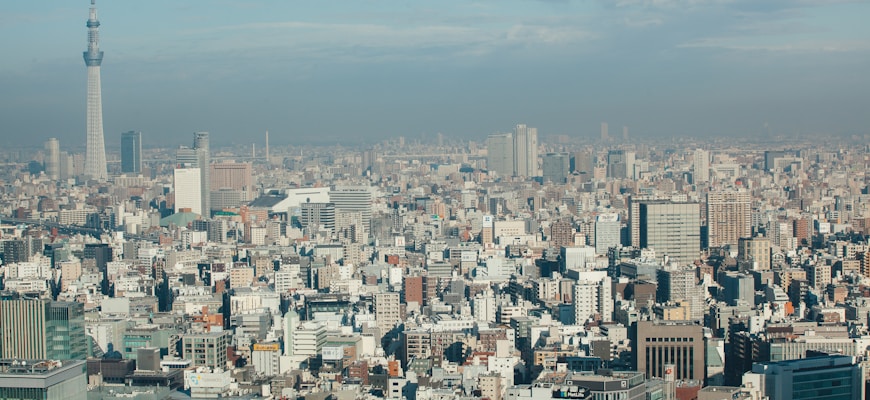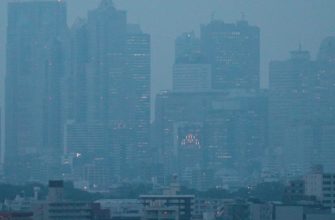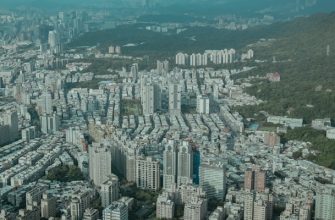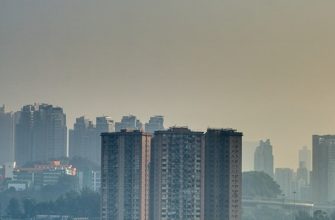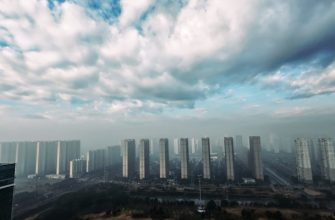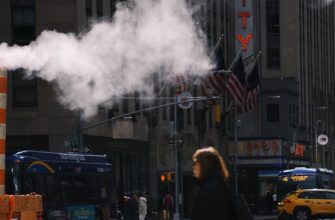- The Challenges of Urban Air Quality in Mega Cities
- Innovative Solutions for Reducing Urban Pollution
- Government Policies and Their Impact on Air Quality
- Community Initiatives: Grassroots Efforts to Clean the Air
- Technological Advances in Monitoring and Reducing Emissions
- Comparative Analysis: Success Stories from Around the World
The Challenges of Urban Air Quality in Mega Cities
Urban air quality in megacities is a pressing issue that affects millions of residents daily. The rapid industrialization, increasing population density, and the rise of vehicular traffic contribute significantly to air pollution levels. Major pollutants such as nitrogen dioxide, particulate matter, and sulfur dioxide often exceed safe limits, posing severe health risks to urban populations.
- Health Impacts: Poor air quality has been linked to respiratory diseases, cardiovascular problems, and even premature death. Vulnerable populations, including children and the elderly, are particularly at risk.
- Environmental Consequences: Air pollution not only affects human health but also has detrimental effects on the environment, including acid rain and climate change.
- Economic Costs: The financial burden of healthcare related to pollution-related illnesses and lost productivity can be substantial for urban areas.
To combat these challenges, megacities are implementing various strategies to improve urban air quality. These include:
- Strict Emission Regulations: Enforcing limits on emissions from industrial facilities and vehicles is crucial for reducing pollutants.
- Promotion of Public Transportation: Encouraging the use of public transit systems can significantly decrease the number of vehicles on the road, leading to lower emissions.
- Green Spaces: Increasing urban greenery, such as parks and trees, can help absorb pollutants and improve overall air quality.
Additionally, public awareness and community engagement play vital roles in enhancing urban air quality. Residents can contribute by adopting more sustainable practices, such as reducing energy consumption and using eco-friendly transportation options.
In conclusion, addressing the challenges of urban air quality in megacities requires a multi-faceted approach that includes regulatory measures, community involvement, and innovative solutions. By prioritizing air quality, cities can create healthier environments for their inhabitants and work towards a sustainable future.
Innovative Solutions for Reducing Urban Pollution
Urban pollution has become a pressing issue for megacities worldwide. Innovative solutions are essential to combat this growing problem and improve air quality. Various cities are increasingly adopting cutting-edge technologies and strategies to tackle urban air pollution effectively.
- Green Infrastructure: Implementing green roofs, urban parks, and vertical gardens can significantly reduce air pollution. These initiatives not only enhance aesthetics but also improve air quality by absorbing pollutants and providing oxygen.
- Electric Public Transport: Transitioning to electric buses and trams helps minimize harmful emissions in urban areas. Electric vehicles are quieter and produce zero tailpipe emissions, contributing to cleaner air.
- Smart Traffic Management: Advanced traffic management systems utilize real-time data to optimize traffic flow. By reducing congestion, cities can lower vehicle emissions and improve urban air quality.
- Air Quality Monitoring: Cities are deploying sensors to measure air quality continuously. This data allows for timely responses to pollution spikes and informs the public about real-time air conditions.
- Community Engagement: Encouraging citizen participation in pollution reduction initiatives fosters a sense of responsibility. Programs that promote cycling, walking, and carpooling can significantly decrease urban pollution levels.
These innovative measures demonstrate a commitment to enhancing urban living conditions. By integrating technology and community efforts, cities can create a cleaner, healthier environment, ultimately leading to reduced urban pollution levels. As megacities continue to grow, embracing these solutions is crucial for sustainable urban development and improved public health.
Government Policies and Their Impact on Air Quality
Government policies play a crucial role in addressing urban air quality issues in megacities. These policies are designed to mitigate pollution levels and promote sustainable practices that enhance the health of city dwellers.
- Regulatory Framework: Local governments implement regulations that limit emissions from industrial sources and vehicles, thereby reducing harmful pollutants in the air.
- Incentives for Clean Energy: Many cities provide incentives for the adoption of clean energy technologies, such as solar power and electric vehicles, which contribute to improved air quality.
- Public Transport Initiatives: Investments in public transportation systems encourage residents to opt for buses and trains instead of personal vehicles, significantly decreasing traffic-related emissions.
- Urban Green Spaces: Policies promoting the creation of parks and green areas help filter pollutants and improve overall air quality by increasing vegetation cover in urban environments.
- Awareness Campaigns: Government-led educational initiatives inform citizens about the importance of air quality and the actions they can take to reduce their environmental footprint.
Effective implementation of these policies can lead to measurable improvements in air quality. For instance, cities that have adopted stringent emission standards often report lower levels of particulate matter and other harmful pollutants. Furthermore, collaborative efforts between various government agencies can enhance the effectiveness of air quality management strategies.
Monitoring and evaluation of air quality are essential components of any governmental approach. By utilizing advanced technology and data analysis, authorities can track pollution trends and assess the impact of their policies. This data-driven approach enables cities to adapt their strategies to meet evolving air quality challenges.
In conclusion, government policies are vital in the fight against urban air pollution. Through comprehensive regulations, incentives for cleaner technologies, and community engagement, megacities can significantly improve their air quality and safeguard public health.
Community Initiatives: Grassroots Efforts to Clean the Air
In recent years, urban communities have increasingly recognized the importance of grassroots initiatives aimed at improving air quality. These community-driven efforts play a crucial role in combating urban air pollution and raising awareness about the detrimental effects of poor air quality on public health. Local organizations and residents are taking action to implement sustainable practices that contribute to cleaner air in metropolitan areas.
- Tree Planting Campaigns: Many cities are launching tree planting initiatives to enhance urban greenery, which acts as a natural air filter, absorbing pollutants and producing oxygen.
- Clean Air Workshops: Community workshops educate residents on the sources of air pollution and provide practical solutions for reducing emissions at the household level.
- Air Quality Monitoring: Local groups are deploying air quality sensors to monitor pollution levels, allowing residents to stay informed and advocate for necessary changes.
- Promoting Public Transport: Initiatives encourage the use of public transportation and cycling, reducing the number of cars on the road and subsequently lowering vehicular emissions.
- Community Clean-Up Days: Organized clean-up events help remove litter and debris from public spaces, which can contribute to better air quality and a healthier environment.
These grassroots movements are vital for fostering a sense of community responsibility towards the environment. By engaging citizens in local air quality initiatives, urban areas can create a more sustainable future. The collaborative efforts of residents not only improve air quality but also strengthen community bonds, making cities healthier places to live.
As cities grapple with the challenges of pollution, the significance of community involvement cannot be overstated. Grassroots efforts are instrumental in driving policy changes and inspiring collective action to tackle air quality issues. By empowering residents to take charge of their environment, urban centers can work towards achieving cleaner air for all.
Technological Advances in Monitoring and Reducing Emissions
In recent years, significant technological advances have emerged in the realm of monitoring and reducing emissions in urban environments. These innovations are crucial for combating the persistent issue of air pollution in megacities. Advanced technologies have made it possible to track pollutant levels more accurately and in real-time, providing essential data for city planners and environmental agencies.
- Satellite Monitoring: Satellites equipped with advanced sensors can detect various pollutants from space, allowing for a comprehensive view of air quality across large urban areas.
- IoT Sensors: The integration of Internet of Things (IoT) devices enables cities to install numerous sensors throughout their infrastructure. These sensors collect data on emissions and air quality, facilitating timely responses to pollution spikes.
- Data Analytics: Sophisticated data analytics tools process the information gathered from monitoring systems. This analysis helps identify pollution sources and trends, enabling targeted interventions to reduce emissions.
- Emission Control Technologies: Innovations such as catalytic converters and particulate filters in vehicles significantly diminish harmful emissions. Additionally, industries are adopting cleaner technologies to minimize their environmental impact.
- Public Awareness Campaigns: Leveraging technology, cities are utilizing mobile applications and social media platforms to educate residents about air quality. This awareness encourages community involvement in reducing emissions.
As urban areas continue to grapple with air pollution, the role of technology in monitoring and reducing emissions becomes increasingly vital. These advancements not only aid in understanding pollution dynamics but also empower cities to implement effective strategies to enhance air quality. By embracing these technological innovations, megacities can work towards a cleaner, healthier future for their inhabitants.
Comparative Analysis: Success Stories from Around the World
Urban air quality has become a significant concern for megacities worldwide, prompting various initiatives to combat pollution. Different cities have adopted diverse strategies to improve urban air, showcasing remarkable success stories that provide valuable insights.
- London, United Kingdom: The introduction of the Ultra Low Emission Zone (ULEZ) has led to a substantial decrease in harmful emissions. This policy encourages the use of electric vehicles and promotes public transportation, contributing significantly to cleaner urban air.
- Beijing, China: Through stringent regulations on industrial emissions and the promotion of electric public transport, Beijing has witnessed a notable improvement in air quality. Efforts to reduce coal usage have also played a crucial role in enhancing urban air conditions.
- Los Angeles, USA: The city’s commitment to expanding green spaces and implementing strict vehicle emission standards has resulted in cleaner air. Additionally, initiatives like carpool lanes and bike-sharing programs have encouraged residents to opt for more sustainable modes of transportation.
- Amsterdam, Netherlands: Known for its bike-friendly infrastructure, Amsterdam has effectively reduced vehicular pollution. The promotion of cycling not only improves urban air quality but also enhances the overall quality of life in the city.
These global success stories demonstrate that effective urban air management strategies can lead to significant improvements in air quality. By adopting comprehensive policies, investing in green technology, and promoting sustainable practices, megacities can successfully combat air pollution and create healthier environments for their residents.
